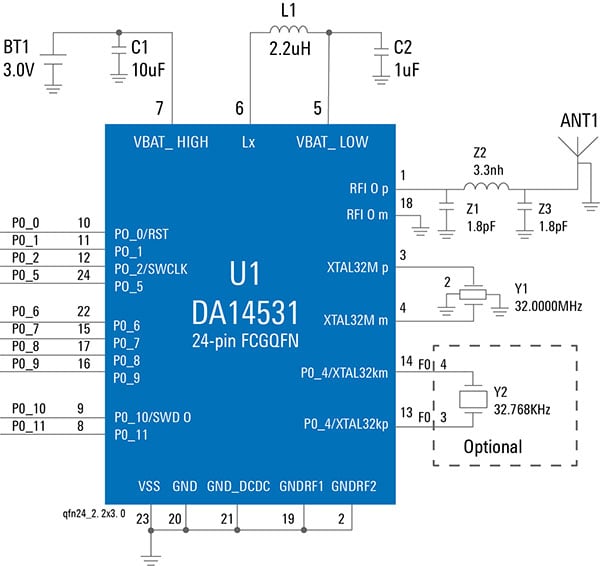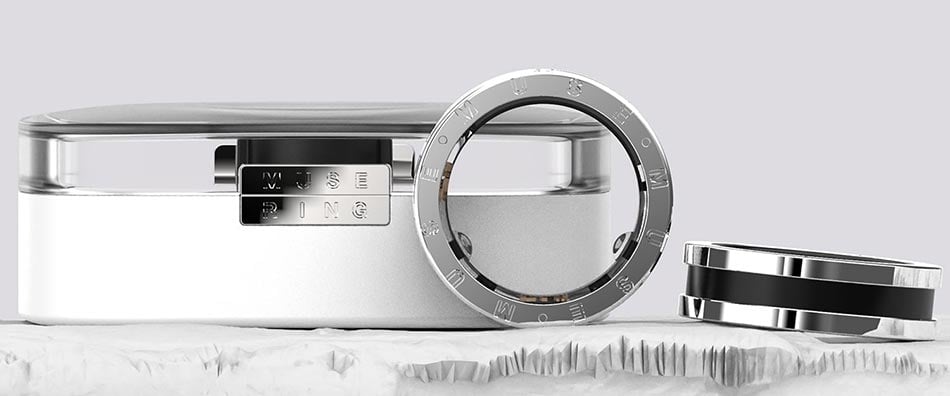The technology of personal medical monitoring is changing incredibly fast. As little as ten years ago, the normal way that a patient would keep track of general health indicators, such as heart rate and blood pressure, or specific indicators such as blood glucose, was through an invasive medical procedure such as a blood test. Such testing would often need to take place away from the home, in a local clinic or a hospital.
Fast forward to today, and patients have it much better. Anyone – not just those receiving treatment from a medical practitioner – can benefit from monitoring vital signs, as well as other indicators of long-term health such as activity and sleep. That’s because a new generation of wearable medical and consumer devices have extraordinary sensor and data processing capabilities built into them. The newest types of products, such as continuous glucose monitors (CGM) and smart rings, can report on the wearer’s condition 24/7, yet are so small and light that the user is hardly aware of them, and are so convenient and easy to use that they are valuable to anyone.
At the heart of this new type of wearable medical device is advanced wireless connectivity technology: a Bluetooth® Low Energy system-on-chip (SoC) for linking to a smartphone, tablet or personal computer, and NFC – the technology that enables contactless payment – for authentication, pairing, configuration, and charging.
Long Battery Life, Tiny Form Factor
The most important limits on the design of both a CGM and a smart ring are the same: space and power. Both devices perform monitoring 24/7, and the expectation is for long battery life, to limit the number of times that the user has to charge them. This puts a strong emphasis on the need for low power consumption in the wireless SoC, both in active and standby modes.
The size of the device is also a critical design parameter; its form factor has to be comfortable for all-day wearing, yet the manufacturer will be eager to pack as much functionality into the device as possible, to increase its value to the user. So this kind of wearable device requires wireless systems for connectivity and charging that are themselves small, and that require the use of the fewest number of external components, to keep the total board footprint to a minimum.
At the same time, these devices perform a range of sophisticated connectivity functions to support both local and remote data access. Despite the size and power constraints, their Bluetooth Low Energy SoC has to provide a robust and reliable connection to the user’s smartphone for data processing and analysis locally or in the cloud. And, NFC connectivity supports functions such as authentication of accessories and usage tracking as well as wireless charging. High performance is therefore an essential requirement.
This presents a tough challenge to the product designer. But manufacturers have a solution that is readily available to them: connectivity products from Renesas that save space and consume amazingly little power.
Performance and Low Power for CGM Designs
A typical example is the DA1453x series of Bluetooth SoCs, which combine very low power consumption with high integration, reducing the number of external components on the board and so saving space in CGM designs.

For example, the Bluetooth 5.1 DA14531 is available in a tiny 2.0mm x 1.7mm package, half the size of any offering from other leading manufacturers. On top of this, it only requires six external passive components and operates with a single crystal for timing input.
Record low hibernation and active power consumption ensure long operating and shelf life with even the smallest disposable batteries: the DA14531 is compatible with alkaline, silver oxide, and coin cell batteries, and includes an internal buck-boost DC/DC converter to extend the useful life of these battery types.
This combination of small size and very low power consumption makes the DA1453x SoCs ideal for a CGM, a small wearable device that has to perform 24/7 monitoring.

Smart Ring Designs: Multiple Functions in One Low-Power Chip
Renesas Bluetooth SoCs such as the DA14695 or DA1459x are striking examples of the twin benefits of low power consumption and high integration for smart rings. The DA14695 SoC is based on a 96MHz Arm® Cortex®-M33F CPU core to run application functions such as processing signals from a smart ring alongside a 96MHz Cortex-M0+ core operating as a sensor node controller and configurable media access controller for the on-board Bluetooth Low Energy v5.2 radio.
The DA14695 offers a remarkable level of integration: on-chip features include a power management IC (PMIC), USB interface and USB charger, motor driver for haptic feedback, and a parallel interface driver for a display screen, as well as strong security protection. Yet in Deep Sleep mode, this high-performance device draws just 10µA.
Contrast this with other Bluetooth SoCs on the market which might provide a CPU, a protocol engine, and a sensor node controller but lack many of the peripheral capabilities in the DA14695, leading to a significant increase in the cost of components and in the amount of space required on the PCB.
Designers of smart rings and other wearable devices can use this type of Renesas Connectivity Solutions product to meet their toughest design requirements.
All-in-One Charger and Data Exchange Component
A similar approach to power and space saving is enabled by Renesas’ NFC technology. NFC is best known for its use in contactless payment terminals, enabling a smartphone or smartwatch to securely exchange data packets to authorize a financial transaction.
In a smart ring, this data exchange capability can also be used for contactless payments. But the same PTX30W NFC tag used for data exchange also enables NFC wireless charging.
Here again, Renesas has performed a miracle of integration to save space: the PTX30W packs an NFC tag, rectifier, limiter, battery charger circuit, and a dedicated core to handle the NFC wireless charging protocol in a miniature 1.78mm x 1.78mm WLCSP package.

The PTX30W pairs with the Renesas PTX130W, a dedicated NFC charging transmitter, called a poller, embedded in the smart ring’s charging case. The PTX130W provides for the maximum power transfer and fast charging thanks to its direct antenna connection technology (DiRAC®). This technology also makes the PTX130W simpler to implement in a charging case design than competing products, as it eliminates the need for EMC filters, and eases antenna matching. The superior RF performance of the PTX130W enables the use of a small antenna and allows for flexible placement of the poller’s and listener’s antennas.
By eliminating the need for additional components, and enabling the use of a small antenna, the PTX30W provides a solution for charging which can be fitted onto the tiny PCB in a smart ring such as the Ring One from Muse Wearables.

A Renesas Ecosystem for Fast and Efficient Product Development
High performance and seamless integration are watchwords of the Renesas Connectivity Solutions portfolio, which dovetails perfectly with the Renesas line of microcontrollers and applications processors. The portfolio also gives users access to the unparalleled suite of tools and resources available from Renesas for development, including the e² studio integrated development environment, Flexible Software Package (FSP) bundles for firmware, development kits, and Winning Combinations – pre-vetted sets of compatible components for specific product designs.
Now designers of wearable medical devices can learn about the full offering for smart connected medical, fitness, and care products in the latest white paper from Renesas Connectivity Solutions: the best guide to designing for low-power and space-constrained but smart and feature-rich personal or wearable devices.



